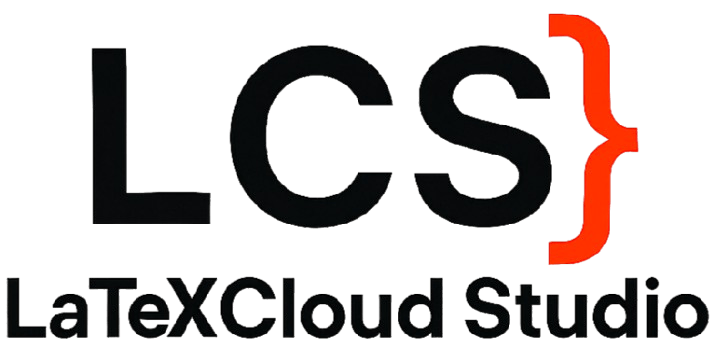When Word Becomes the Bottleneck
Many researchers reach a point where Word’s limitations become apparent:Document Length and Stability
- Word struggles: Documents over 50-100 pages become slow and unstable
- LaTeX excels: Handles documents of any length efficiently
- Real impact: PhD theses averaging 200+ pages benefit significantly
Mathematical Content
- Word’s equation editor: Limited functionality, inconsistent formatting
- LaTeX’s math mode: Professional typesetting, extensive symbol library
- Comparison:
$\sum_{i=1}^{n} x_i$vs clicking through multiple menus
Bibliography Management
- Word: Manual formatting, inconsistent styles, broken links
- LaTeX + BibTeX/BibLaTeX: Automatic formatting, style switching, robust cross-references
Cross-References and Numbering
- Common Word issue: “Error! Reference source not found”
- LaTeX solution: Automatic, reliable cross-referencing system
Realistic Assessment: Is LaTeX Right for You?
You Should Consider LaTeX If:
✅ Writing documents > 20 pages regularly✅ Including mathematical equations or chemical formulas
✅ Managing extensive bibliographies (>50 references)
✅ Collaborating with LaTeX users
✅ Submitting to journals with LaTeX templates
✅ Value consistent, professional formatting
Stick with Word If:
❌ Writing short documents (< 10 pages)❌ Heavy collaboration with non-technical users
❌ Tight deadlines with no learning time
❌ Primarily visual/creative content
❌ Industry requires Word compatibility
Common Misconceptions About LaTeX
”LaTeX is only for mathematicians”
Reality: Used across disciplines - humanities, social sciences, business- History dissertations with extensive footnotes
- Psychology papers with APA formatting
- Business reports with financial tables
”You need programming experience”
Reality: Basic LaTeX requires learning ~20 commands\section{Title}- creates a section\cite{reference}- adds a citation\includegraphics{file}- inserts an image
”It’s too difficult to learn”
Reality: Learning curve exists but plateaus quickly- Week 1: Basic document structure
- Week 2: Figures, tables, references
- Month 1: Advanced features and customization
The Transition Strategy
Phase 1: Experimentation (Week 1-2)
Start with a small, non-critical document:Phase 2: Parallel Development (Week 3-4)
- Continue your main project in Word
- Recreate one chapter in LaTeX
- Compare formatting quality and workflow
Phase 3: Full Transition (Month 2+)
- Start new projects in LaTeX
- Convert existing work gradually
- Build personal template library
Practical Learning Path
Essential Skills (Priority 1)
- Document structure:
\chapter,\section,\subsection - Text formatting:
\textbf{},\textit{},\underline{} - Lists:
itemize,enumerate,description - Basic math:
$x = 5$for inline,\begin{equation}for display - References:
\label{}and\ref{}
Intermediate Skills (Priority 2)
- Figures:
\includegraphics,figureenvironment - Tables:
tabularenvironment, basic formatting - Bibliography: BibTeX basics,
\cite{}commands - Packages: Understanding
\usepackage{}
Advanced Skills (Priority 3)
- Custom commands:
\newcommand{} - Complex math:
align,matrix, theorem environments - Advanced graphics: TikZ basics
- Document classes: Choosing and customizing
Real-World Example: Converting a Research Paper
Original Word Workflow Issues:
- Manual equation numbering
- Inconsistent citation formatting
- Figure positioning problems
- Cross-reference errors
LaTeX Solution:
Tool Recommendations for Beginners
Cloud-Based Editors (Recommended)
- LaTeX Cloud Studio: Full LaTeX environment, no setup required
- Overleaf: Popular online editor with collaboration features
Local Installations
- TeXLive (Windows/Linux) + TeXworks
- MacTeX (macOS) + TeXShop
- VS Code with LaTeX Workshop extension
Reference Managers Integration
- Zotero: Best overall LaTeX integration
- Mendeley: Good for beginners
- JabRef: Dedicated BibTeX editor
Managing the Learning Curve
Week 1 Goals
- Set up LaTeX environment
- Create first document with sections
- Compile successfully
Week 2 Goals
- Add figures and tables
- Implement basic bibliography
- Master cross-referencing
Month 1 Goals
- Complete first full document
- Understand package system
- Develop personal workflow
Common Beginner Mistakes
- Compilation errors: Learn to read error messages
- Package conflicts: Start minimal, add packages gradually
- Formatting obsession: Focus on content first
- Overcomplicating: Use simple solutions initially
Measuring Success
Productivity Indicators
- Time to format: Decreases after initial learning
- Error frequency: Fewer formatting surprises
- Collaboration efficiency: Easier version control
- Output quality: More professional appearance
When You’ll Know You’ve Made It
- You stop thinking about code syntax
- Formatting becomes automatic
- You start helping others with LaTeX
- Going back to Word feels limiting
Next Steps
Immediate Actions
- Try the basic template above
- Convert a simple document
- Join LaTeX communities (r/LaTeX, TeX StackExchange)
- Build a reference collection
Long-term Development
- Learn your field’s specific packages
- Develop custom templates
- Explore advanced features
- Contribute to LaTeX community
Conclusion
The transition from Word to LaTeX represents a shift from manual formatting to logical document structure. While the initial learning curve is real, the long-term benefits—in terms of document quality, stability, and professional appearance—make it worthwhile for academic and technical writing. The key is realistic expectations: LaTeX won’t make you a better writer, but it will free you from formatting frustrations so you can focus on what matters—your research and ideas.Ready to start? Try our beginner templates or explore our complete LaTeX guide to begin your journey.
